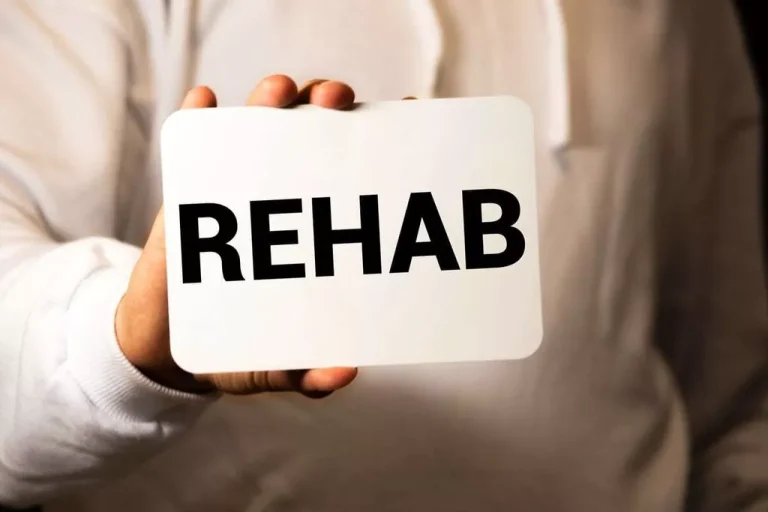
Some key considerations include the location, amenities, house culture, staff qualifications, and the availability of aftercare support. To find a suitable house for sober house your needs, you can utilize various resources and tools. Living in a sober house provides a unique opportunity to transition from treatment to independent living while receiving ongoing support and guidance.

Related Resources

Many houses also provide access to external support groups and organizations such as 12-step programs, vocational training, and educational resources. An average day at a sober living home usually includes group breakfasts, lunches and dinners. Most homes have household meetings nightly, and residents often attend treatment, support group meetings or other wellness activities together.
- They also tend to be affiliated with addiction treatment centers that provide outpatient programs.
- Most houses encourage residents to remain until they feel ready to return to a fully independent life without compromising their recovery.
- To find out how much of the cost of sober living housing your health insurance will cover, it is best to call your insurance company before committing to a sober living home.
- Morgan is freelance mental health and creative writer who regularly contributes to publications including, Psychology Today.
How Much Do Sober Living Homes Cost?
The Court affirmed that those extra benefits could have strings attached, like separation and CUP or other permit requirements, as long as, on the whole, it works as a net benefit to disabled individuals. It was also important to the Court that Costa Mesa allows a group or sober-living home to proceed under the rules specific to those uses, or under the city’s general boarding house regulations — having more options was a benefit. PHOENIX — A class action lawsuit, filed last week, accuses state officials of ignoring a whistleblower who tried to warn them about what became $2.8 billion scandal involving fraudulent sober https://ecosoberhouse.com/ living homes.
How much do sober living homes cost?
- Since sober living typically follows addiction treatment, getting a referral from the treatment provider is recommended.
- Sober living houses operate on a set of guidelines designed to help residents stay focused on their recovery.
- IOP sessions are scheduled at a variety of times to accommodate busy schedules and allow participants to continue with work, attend school, or take care of responsibilities at home.
- With little structure and monitoring, someone new in their recovery may want to a higher-level sober living home.
- This is achieved through required sobriety, recovery group attendance, and household participation.
Here, you’re surrounded by individuals who understand the challenges of addiction recovery firsthand. This peer support system encourages open dialogue, sharing of experiences, and mutual encouragement, creating a network of support that’s invaluable during recovery. Many studies have shown that the best-practice rehabilitation treatment provides continuity of care post-discharge. Sober homes allow individuals to continue with elements of their recovery treatment even after their formal rehab program has finished. This continuation of support, motivation, and, in some cases, therapy will significantly enhance their chance of long-term sobriety.
- Ascension House provides high structure and accountability to individuals recovering from addiction with safe and comfortable sober living homes in Austin, TX.
- Recovery residences can help residents to build recovery capital across these domains in a variety of different ways, even in residences where no clinical or recovery support services are provided (Cano et al., 2017; Mericle, Carrico, et al., 2019).
- Here’s how sober living homes can make a difference in your recovery process.
- The time to take the next step toward a brighter tomorrow is now—you’re stronger than you think.
Residents of work release housing are frequently required to pay rent on a “sliding scale” which is often dependent on whether or not they can find a job while in residence.5 In addiction-recovery houses, a resident’s stay is sometimes financed by health insurance. In addition, a stay in a recovery house might be a partial requirement of a criminal sentence. Residents are normally asked to remain sober and comply with a recovery program. Most sober living houses require residents to pay rent, which helps foster a sense of responsibility and financial independence. By handling expenses such as rent and utilities, residents learn to manage their finances responsibly—a skill necessary for independent living. It’s normal to feel apprehensive about leaving the supportive environment, but remember that you are not alone.

We created a variable to identify kinds of substance use diagnoses on record (alcohol use only, drug use only, or alcohol and drug use). After tallying across types, the study team created a variable to indicate whether clients had 0–1 or 2 or more different types of diagnoses. Residents in the structured sober living residence learned of the opportunity to participate in a focus group about drug addiction treatment their experiences there in two primary ways. Staff posted a flyer announcing the date, time, and location (a group room at the treatment facility) of the focus group in common areas and distributed the flyer to residents during a house meeting prior to the focus group.
- These skills ensure that once you transition to independent living, you’re equipped not just to survive but thrive.
- Also known as recovery residences or drug-free housing, provide a structured living environment for individuals who have completed substance abuse treatment and are seeking ongoing support in maintaining sobriety.
- By finding a house that meets your individual requirements and values, you may increase your chances of achieving sustained recovery.
- They offer a balanced level of independence and support, enabling residents to strengthen their sobriety skills in a real-world setting before fully integrating back into society.